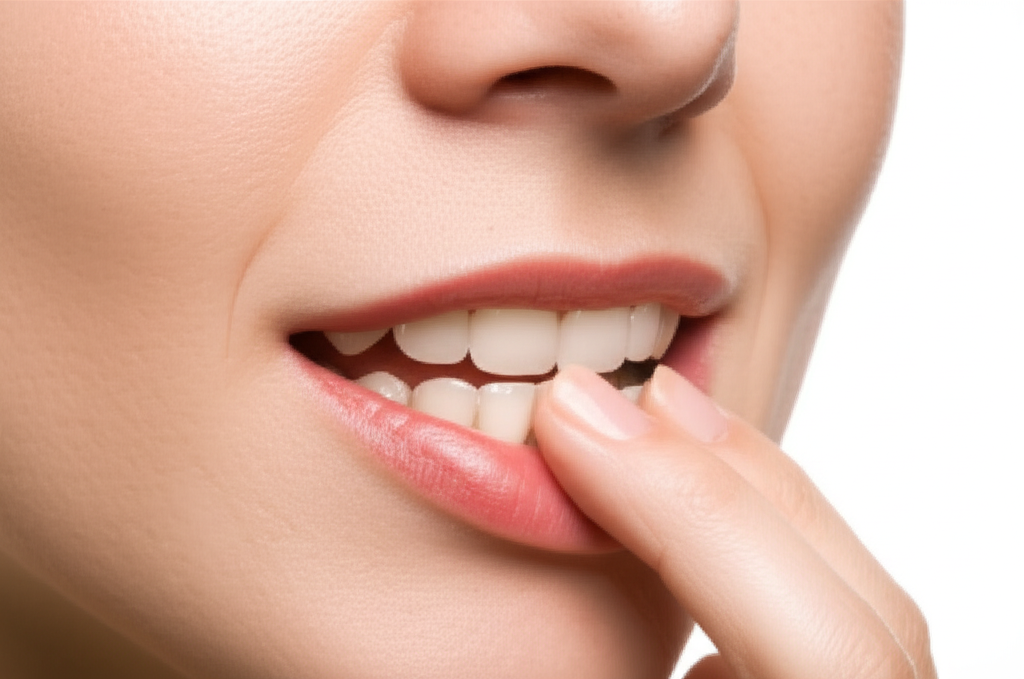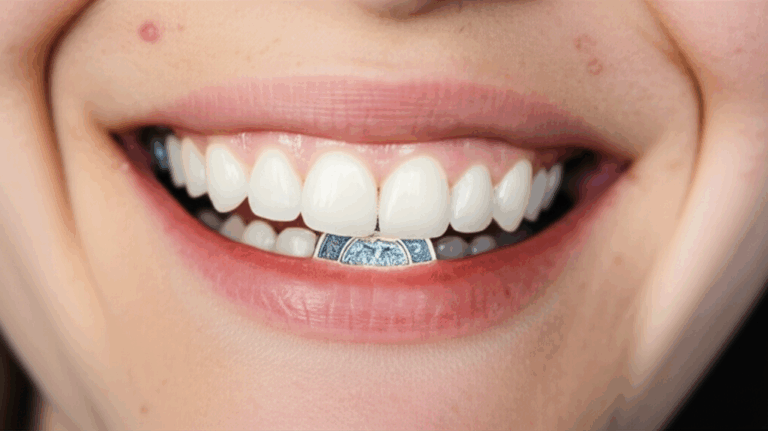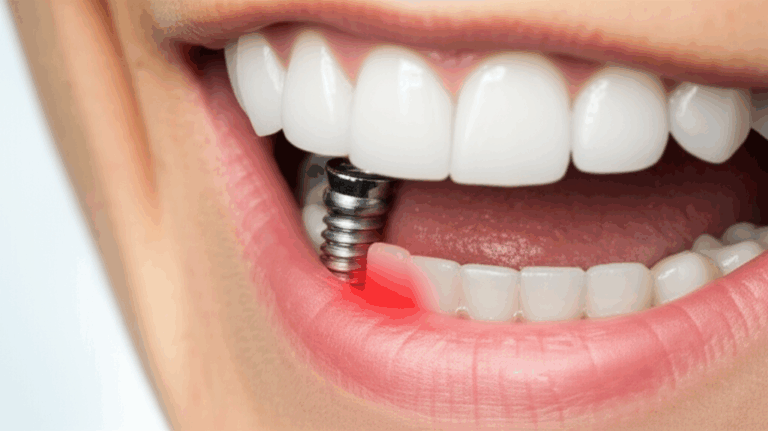
Can Iron Deficiency Cause Dental Problems? A Simple Guide
Have you ever wondered, “Why does my tongue hurt?” or “Why do I have cracks at the corners of my mouth?” Maybe your gums look paler than usual, or you keep getting mouth sores that just won’t heal. Here’s something you might not know: not having enough iron—something that’s actually very common—not only makes you tired or dizzy, it can also mess up your mouth.
If you’ve ever searched, “Can iron deficiency cause dental problems?” you’re not alone. Lots of people are surprised by how close their overall health connects to what’s happening inside their mouth. Let’s look at how low iron and mouth problems are linked, what signs to watch for, and the steps you can take for a healthy, pain-free smile.
Table of Contents
- The Essential Role of Iron in Oral and Overall Health
- Specific Dental and Oral Problems Linked to Iron Deficiency
- Recognizing Other Common Symptoms of Iron Deficiency
- Diagnosing Iron Deficiency: What Your Doctor Checks
- Treatment and Management: Restoring Iron Levels and Oral Health
- Prevention Strategies: Keeping Your Iron Levels Optimal
- When to See a Doctor or Dentist
- Conclusion: Prioritizing Iron for a Healthy Mouth and Body
The Essential Role of Iron in Oral and Overall Health
Every part of your body needs iron—even the skin inside your mouth and on your gums. Why is iron such a big deal? Think of it like a delivery truck in your blood. Iron helps your red blood cells carry oxygen from your lungs to everywhere else. No iron means not enough oxygen—plain and simple.
That’s not all. Iron is also needed for growing new cells, having a strong immune system, and fighting off infections or healing up from cuts or sores. Here’s the big thing: the lining of your mouth grows back really quickly, and that means it needs lots of iron-rich blood to stay healthy. If your body starts running low on iron (what doctors call iron deficiency anemia), the cells in your mouth can’t get what they need. This sets up many mouth problems.
Key Points:
- Iron brings oxygen and food to your tongue and gums.
- If you don’t have enough iron, your immune system gets weaker, making it hard to keep your mouth healthy.
- The cells in your mouth that grow and replace themselves quickly are extra sensitive to running low on iron.
Specific Dental and Oral Problems Linked to Iron Deficiency
So, what happens to your mouth if you don’t have enough iron? Here are the most common problems caused by iron deficiency—and why they show up.
Sore, Smooth, or Swollen Tongue (Atrophic Glossitis)
If your tongue feels sore, looks really red, is smooth, or gets swollen, it might be atrophic glossitis—a well-known sign of iron deficiency. It’s like the bumps on your tongue (called papillae) start to disappear, making the surface look shiny and feel raw.
Why does this happen?
Not enough iron means the cells in your tongue don’t get enough oxygen, so they can’t heal and grow back fast enough. Eating, talking, or even drinking water may start to hurt.
Cracked Corners of the Mouth (Angular Cheilitis)
Those painful lines or raw spots at the corners of your mouth? That’s angular cheilitis. When you have low iron, your skin and the inside lining of your mouth can’t fix themselves as quickly. Plus, your immune system is weaker, so little cracks can get infected by bugs like fungus or yeast.
What’s behind it?
It’s a mix of weaker skin, dryness, and a higher chance for fungus infections—all worse when you’re low on iron.
Pale Gums and Oral Mucosa
Check your mouth in the mirror. Do your gums look much lighter or even pale instead of pink? That’s not just about looks. Pale gums mean you could have less hemoglobin—the part of your blood that carries iron and gives color. This can tell your dentist or doctor you might be anemic.
What’s going on?
With less iron, you have fewer healthy red blood cells, so your gums and inside cheeks look pale.
More Likely to Get Mouth Infections (Like Oral Thrush)
Iron is a big part of your immune strength. If you’re low, you might get mouth infections easier, like thrush (white patches on your tongue or roof of your mouth). It’s like your mouth is a building and, without iron, the security guards are home sick—so troublemakers come in.
How does this happen?
Your infection-fighting cells use iron. Without it, they can’t do their job well.
Trouble Swallowing and Plummer-Vinson Syndrome
Iron deficiency doesn’t just stop with your mouth—it can also make it hard to swallow. Sometimes, thin webs form in your throat, making it hard or painful for food to go down. This rare problem is called Plummer-Vinson syndrome, and it raises the chance of getting certain mouth and throat cancers.
What’s driving it?
Long-lasting, really low iron levels damage the inside lining of your throat and mouth.
Dry Mouth (Xerostomia)
Is your mouth really dry? Lots of things cause dry mouth, but sometimes iron deficiency plays a role—especially through stress on your whole body or other related problems.
What’s the connection?
With less spit, chewing and swallowing gets harder, and you’re more likely to get cavities.
Gum Problems and Tooth Decay
Lack of iron won’t make your teeth rot by itself, but it makes gum disease and tooth decay more likely. Slow healing, thin mouth tissues, and a tired immune system let bacteria take over. You might notice healing after the dentist takes longer, or that you get gum infections more easily.
The bottom line?
Low iron lets bacteria cause more problems for your gums and teeth.
Quick Reference Table: Iron Deficiency & Mouth Health
| Mouth Problem | How Low Iron Makes It Worse |
|---|---|
| Sore/Red Tongue | Less oxygen, loss of tongue bumps (papillae) |
| Cracked Mouth Corners | Slow healing, higher chance of infection |
| Pale Gums/Inside Cheeks | Not enough healthy red blood cells |
| Thrush (White Patches) | Weak immune system, yeast grows more |
| Dry Mouth (Low Saliva) | Linked to stress and iron issues |
| Gum Disease/Tooth Decay | Slower to heal, easier for bacteria to stay |
| Plummer-Vinson Syndrome | Trouble swallowing, web-like growths, higher cancer risk |
Recognizing Other Common Symptoms of Iron Deficiency
Mouth problems are rarely the only clue. If you don’t have enough iron, you probably notice more than just sore gums or a hurting tongue.
Look out for these signs:
- Feeling tired all the time, weak, or out of breath after walking a short distance
- Pale skin (not just gums, look at your eyelids and under your nails too)
- Nails that break or bend easily, hair loss
- Feeling dizzy or lightheaded
- Cold hands and feet
- Headaches or cravings for weird things to eat (like ice—that’s called pica)
Noticing both mouth and body signs can help your doctor or dentist figure things out faster.
Diagnosing Iron Deficiency: What Your Doctor Checks
If your dentist or doctor thinks you might have iron deficiency, they’ll do some blood tests to make sure.
Tests you might get:
- Complete Blood Count (CBC): Looks at the size and number of your red blood cells.
- Serum Ferritin Test: Checks the iron stored in your body.
- Hemoglobin Level: Tells how much of the oxygen-carrying stuff is in your blood.
Why does a real diagnosis matter?
Mouth problems alone don’t confirm iron issues—you need blood tests for the answer and to find out why (like bleeding, a gut problem, or more).
Lots of dentists can spot mouth signs first. They might ask you to talk to your doctor about a blood test, especially if you haven’t been anemic before or the problem is new.
Treatment and Management: Fixing Iron Levels and Mouth Health
Good news: If your mouth problems are caused by low iron, they often get a lot better—sometimes really fast—when you bring up your iron levels. Here’s what to do.
Eating More Iron in Your Food
Iron comes in two main types: heme (from animals, like beef, chicken, and fish) and non-heme (from plants, like beans, lentils, and spinach). Your body soaks up more iron from animal foods, but eating Vitamin C (from oranges or bell peppers, for example) helps you get more iron from plants.
Easy iron foods:
- Lean red meat, chicken, or fish
- Eggs (mainly the yolk)
- Beans, lentils, chickpeas
- Tofu or tempeh
- Dark greens (spinach, kale)
- Cereal or bread with added iron
Tip:
Eat beans with tomatoes or orange slices to help take in more iron!
Iron Supplements: When That’s Not Enough
Sometimes, just eating iron-rich foods won’t be enough—especially if your iron is very low. Iron pills (like ferrous sulfate or ferrous gluconate) are often given. Some people need iron through an IV if their body won’t take it in from the gut.
Side effects to know:
- Constipation
- Upset stomach
- Dark or black poop (totally normal!)
Take iron only as your doctor says.
Too much iron is dangerous, so don’t just buy pills and guess.
Finding and Treating the Real Cause
Low iron almost always has a reason. Heavy periods, stomach problems (like celiac or Crohn’s disease), losing blood, or gut surgeries (like weight loss surgery) can be behind it. Your doctor might check for these, too—not every iron problem is solved by eating steak.
What Dentists Can Do to Help
You don’t need to wait until your iron is up to feel better. Depending on what’s wrong, your dentist may suggest:
- Medicines for thrush (oral fungus)
- Moisturizing gels or fake saliva for dry mouth
- Vitamin B or folate pills if you’re low (these help mouth health, too)
- Regular cleanings and good brushing to stop more trouble
Keep brushing, flossing, and maybe use a mild, alcohol-free mouthwash. It could take longer to heal, but good care keeps things from getting worse.
Prevention Strategies: How to Keep Iron Levels Up
It’s true: “A little prevention is better than a big cure.” Here’s how you can help protect yourself from iron problems and mouth issues.
What you can do:
- Eat a balanced diet: Have iron-rich foods every day, and pair veggies with Vitamin C foods.
- Know your risk: Women who get periods, vegans/vegetarians, people with long-lasting illnesses, and older adults are more likely to run low on iron.
- Get regular checkups: Visit your dentist even if you just have a small mouth change—sometimes that’s the first sign.
- Watch for symptoms: Don’t ignore pale gums, sores that don’t heal, or pain that’s new.
If you already have something linked to iron problems (like heavy periods or celiac disease), keep checking in with your doctor about your iron.
When to See a Doctor or Dentist
So, when should you get help? Here’s a simple list:
See a dentist or doctor if you have:
- Mouth problems that won’t go away (sore/red tongue, cracked corners, thrush)
- Feeling tired, pale, or out of breath for no reason
- Problems that don’t get better after changing your diet
- Mouth issues suddenly getting worse (like gum disease or sores)
Dentists spot iron problems early—a lot of times, before you feel tired! If you’re already taking medicine for low iron, let your dentist know. Doctors and dentists can work together to get your mouth (and body) back to health.
Conclusion: Putting Iron First for Your Mouth and Body Health
Let’s sum it all up—here’s why iron matters for your mouth:
Main Things to Remember:
- You need iron for healthy teeth, gums, and mouth skin.
- Not enough iron can make your tongue sore, crack your mouth corners, pale your gums, dry out your mouth, and make it easier to get gum disease or infections.
- Mouth signs usually show up with other body warnings, like tiredness and pale skin.
- The real answers come from blood tests, not just looking in the mirror.
- You fix iron deficiency with better foods, supplements, finding out the real cause, and good dental care.
- You can avoid trouble by eating well, seeing your dentist regularly, and paying attention to little changes.
You deserve a happy, pain-free smile. If you’re worried about iron or mouth problems, don’t guess—ask your dentist or doctor. Sometimes your mouth is just trying to tell you your body needs help.
Frequently Asked Questions
Are brittle teeth a sign of iron deficiency?
Not usually, but iron deficiency can still affect your teeth—not by making them brittle, but by making your gums and mouth heal slower and get infections easier.
Can children get mouth problems from low iron?
Yes. Kids who don’t have enough iron can have slow healing, more mouth infections, picky eating because their mouth hurts, and sometimes crave eating weird things like dirt.
Can you fix mouth problems caused by low iron?
Yes! Lots of mouth problems from low iron get much better—or go away—when you treat the iron deficiency.
If you want to know more about teeth care or dental problems, check out these good resources: teeth health or dental diseases.
Explore More: Simple Dental Solutions
Knowing how iron links with mouth problems is just one part of keeping your teeth healthy. If you want to learn about advanced tooth repairs—like dental crowns, bridges, or full mouth replacements—a good lab makes all the difference. See how new ideas from a crown and bridge lab or a modern digital dental lab can help you get a strong, nice-looking smile.
Your Healthy Takeaway
- Iron matters for a healthy mouth—don’t overlook the signs!
- Changes in your mouth might be your first clue something’s wrong.
- Get simple blood tests to know what’s happening and get the right help.
- Both home eating changes and professional checkups are important.
- Stay alert, keep learning, and don’t be afraid to ask for help.
You’re worth it—for your smile, and every other part of you.
> “You can’t pour from an empty cup—so fill yours with information, good food, and the right care. Your smile will thank you!”
This article was reviewed by a licensed dental professional. For personal advice, always talk with your dentist or doctor.
More Reading & Resources
- Teeth Information – Learn more about your teeth and how to take care of them.
- Dental Care Tips – Tips on keeping your smile the best it can be.
If you found this guide helpful, share it with a friend or tell your dental office—it might help them spot iron deficiency in someone else, too.








